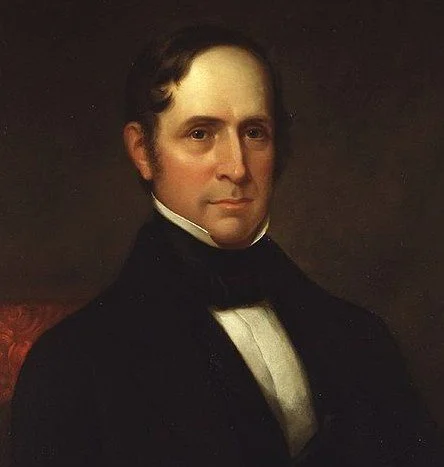Did you know that on two occasions, we almost had a President by the name of Willie? That was his real name, not his nickname. Mangum portrait by James Lambdin, 1844.
Read MorePresident Willie?
President Willie?
By Lawrence W. Reed
When Jimmy Carter announced his candidacy for the Presidency in December 1974, I recall my initial reaction: This country won’t elect a man who goes by his childhood nickname. It doesn’t sound presidential.
Of course, I was wrong. Jimmy was elected, though we soon found out that he had a more formal real name, James Earl Carter.
Did you know that on two occasions, we almost had a President by the name of Willie? That was his real name, not his nickname. I refer to Willie P. Mangum. Here’s the story.
Until the middle of the 20th Century, no constitutional mechanism provided for the filling of the office of Vice President if a VP resigned or died. The President would simply serve out his own term without a VP. In the meantime, if the President himself died, resigned, or was removed from office, then under the Succession Act of 1792, the President Pro Tempore of the Senate would assume the Presidency.
A month after he took the oath of office in March 1841, President William Henry Harrison died. Vice President John Tyler (“His Accidency” to his political opponents) succeeded Harrison. There being no Vice President for the remaining three years and 11 months of Tyler’s time in the White House, the President Pro Tempore of the Senate was next in line should anything happen to Tyler—and it nearly did, twice.
Tyler had switched from Democrat to Whig a few years before, over disagreements with Andrew Jackson, but he still possessed strong Jeffersonian principles. He infuriated the Whigs when he refused to champion a central bank and subsidies to the states. His veto of a bank bill, in fact, led to the most violent demonstrations ever seen in front of the White House. Tyler became the only President to be formally kicked out of his own party.
Whig hostility to Tyler reached fever pitch when Virginia congressman John Minor Botts introduced an impeachment resolution in July 1842, the first of its kind in American history. It was defeated the following January after the Whigs lost control of the House in the November elections.
If Tyler had been impeached, convicted, and removed from office as Botts and his allies had hoped, the Senate’s President Pro Tempore would have assumed that office, giving the country President Willie P. Mangum of North Carolina.
Willie almost became President on a later occasion as well. On February 28, 1844, President Tyler and a group of dignitaries cruised the Potomac aboard the steam-powered warship, the USS Princeton. One of its guns accidentally exploded, killing the Secretary of State, the Secretary of the Navy, and four other notables. The President happened to be below deck and was uninjured, though more high-ranking U.S. officials died on that one day than ever before or since.
Tyler did not run again in 1844 and retired from the Presidency in March 1845. Willie P. Mangum never came so close to the job again.
What would a Mangum administration have looked like? Doubtless, it would have pleased the Whig leader, Henry Clay of Kentucky. Both Mangum and Clay were foolishly enamored of Whig nonsense like high tariffs, corporate and state welfare, federally funded “internal improvements” and an elitist central bank. Thanks to Tyler, who put right principles above party politics, the country was spared all that for a few decades.
Postscript: Harrison Tyler, the last surviving grandson of our 10th President, passed away only this past May. For good reason, he was proud of his grandfather to his dying day.
#####
(Lawrence W. Reed is President Emeritus, Humphreys Family Senior Fellow, and Ron Manners Global Ambassador for Liberty at the Foundation for Economic Education in Atlanta, Georgia. He blogs at www.lawrencewreed.com.)

